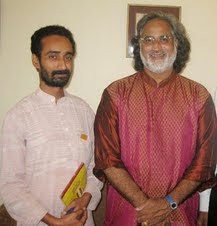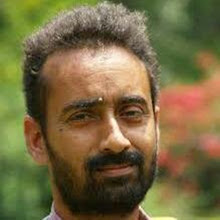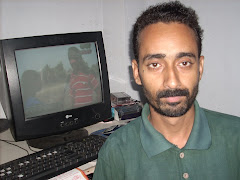By SANTOSH SINGH, The Telegraph
Muzaffarpur, Jan. 7 : Ruby, Anita, Ruma Devi and Khushbu are the Tintinlage under Deoria in Paroo some 80 km from Patna.
These four young reporter-cum-sleuths cycle their way over a 20 km area to "capture" rural news and scoops in their cameras for Appan Samachar-translated as "our news"-a news "channel" that is "manned" by the four. The all-woman news network was started and is run by a voluntary group Mission Eye International Service and is the brainchild of its chairperson Santosh Sarang.
The network began on December 6, 2007, to spread awareness about the social evils and issues that exists within the 20 km-radius of Chandkewari.
Though initially dismissed as nautanki (farce), Appan Samachar started grabbing eyeballs when it used a projector and a 4-feet by 5-feet screen to showcase 30-40 minutes programmes in weekly and bi-weekly markets of Ramlilagacchi among others.
The plan was simple-if one could choose the most crowded spot in the market, then one could get an audience (anywhere between 500-700 people) watching any programme-whether on foeticide or on witchcraft, or child marriage and child labour.
Talking to The Telegraph, Santosh Sarang, stresses they have just begun and the team has a long way to go. "As television has not reached the far-flung areas, our team wishes to bridge the information and education gap for the people." Sarang zeroed in on the idea, while shooting for a project film for his organisation.
For now, he refrains from calling Appan Samachar a "channel". We are yet to take it to every household through cable network. We wait for weekly and bi-weekly market days to run our programmes. We don't qualify as yet".
Hopefully, some day they would and expansion plans are on to take Appan Samachar to areas under Saraiya and Marwan blocks.
But fund crunch is a constraint-the "channel" depends on the support of public representatives and better off villagers. "We have engaged four young women who work as anchors and reporters-cum-camerapersons for a small amount. We have employed students and housewives as it would be an empowering experience for them." Travelling allowances and some pocket money are all that the reporters get for now.
But money does not seem to have deterred the team that comprises an enthusiastic and committed lot. Ruby, who learnt to roll the camera within a fortnight, said: "I am student of Sahebganj College. This stint has given me the confidence to face the world as I double up as a reporter sometimes, not bothering about my dress or accent. "The reporters speak in their local dialects-Bhojpuri or Angika and a lot of Hindi.
Their last "breaking news" was on witchcraft. The piece remained a talking point in villages under Paru for a long time. (courtesy : The Telegraph)
Posted by: Santosh Sarang
Santosh, a social activist turned journalist, is based in Muzaffarpur, Bihar. Despite limited resources, He runs the only women's video program, Appan Samachar, promoting rural journalism from the Naxal affected area of Ramlila Gachi, Bihar. It is a program on women and by women but put together by Santosh. The CNN-IBN group has recognised his performance in adverse conditions and awarded him the prestigious “Citizen Journalist Award” in 2008.Currently he works as Chief Sub Editor with Prabhat Khabar, Muzaffarpur, and has published more than 150 articles in different magazines on developmental issues and environmental concerns. He was awarded the South Asia Climate Change Award Fellowship by PANOS. He has written for Prayavaran Darshan, India Innovates and Gaon Ghar of Doordarshan, Patna. He's on Twitter with @Santosh_Writes













2 Comments